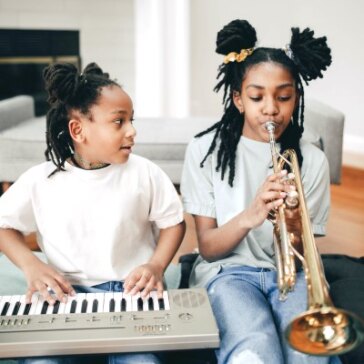
Over the last few months, Nafeesah Symonette and I have been presenting on diversity, equity, and inclusion (DEI), by way of culturally responsible teaching, and its connection to social-emotional learning (SEL) in the classroom. Soon, we will launch a course in these topics accessed through the MAEIA Academy, but more on that later.
The central premise of these presentations is that to personally change and create the change we’d like to see in the world, we need to understand our own lived experiences and those of others. As a representative of “the body” from my early career as a professional dancer/choreographer, to now, as an advocate for “authentic” social-emotional learning, I share how this work is:
- rooted in knowing your own nervous system and
- reaches out to how we interact with others through our social engagement system.
The pathway includes the five competencies of social-emotional learning and the context is creating a container, via our classrooms, where we can honor our own lived experiences while also honoring those who differ from us, i.e. mirrors and windows.
As Nafeesah has written before, honoring our experience and those like us leads us to the metaphor of mirrors. That is, every human should find themselves reflected in the literature, art and references used in the classroom. Honoring the ways in which others experience and move through the world can personally lead us to the metaphor of windows; intentional opportunities to see how life can be different from our own day-to-day routines and relationships to others, to systems, and to community.
As we navigate new terrain in our own professional learning, as well as our personal growth of cultural competence, our bodies can become activated. This might mean we feel a charge in our system; electricity in one physical place or traveling through the whole body, maybe a sinking feeling, or tension. Each of these sensations connect with nervous system states and can be classified as a “reaction.” Our body is signaling discomfort of a particular flavor before our minds have even grasped what we are thinking or why we are having this response.
To shift to a more sophisticated position, we notice and name that reaction for what it is: a body’s response. Then we build the skills we need to address it. It might sound like, “Oh, my heart is racing. I am noticing that this topic is activating my system. I wonder why that is?” Sometimes acknowledgement alone can create a shift to a more regulated experience such as the heart rate slowing. Sometimes a tool is useful, such as “I am noticing my heart is racing. Let me drum my hands on my legs at the same racing pace and then slow my hands down and my heart rate will slow down too.”
When we can sustain this shift from reaction to returning to regulation over time, we build resilience. Resilience isn’t a destination in which we stay, it is a process of mobility. The ability to move through these nervous system states is what creates resilience, or as Dan Siegel, Clinical Professor of Psychology and prolific author, describes in his book, The Developing Mind, as widening our “window of tolerance.”
As such, I think of this progression as reactivity to regulation to resilience.
There is another tryptic of “R” experiences that Nafeesah frames for us, and that is: reactivity to responsive to culturally responsible teaching.
In the context of embracing diversity, equity, and inclusion in our classroom management, instruction, and assessment practices, the educator’s nervous system leads the way. The state of our nervous system drives the stories we tell about ourselves, others, and the world around us. In the classroom, this features the stories we tell about our students.
For the educator, embarking on this path of personally growing in public, a lot of “activation” can arise. So, applying the nervous system progression to the context of cultural competence often takes the route of:
- First, reactivity which may sound like, “Let me add a Black artist or author to my semester. That should do it. “
- Then, responsiveness might sound like, “Honoring black history is not to be limited to February. Let me examine my curriculum, and my artist examples, to determine who is not represented and how I can adjust.”
- Culturally responsible teaching might look like identifying the cultural backgrounds of students and identifying who is not represented. Including content that speaks to the students, and their cultural reality “mirrors” while also including content that grows their global knowledge “windows.” Responsibility suggests that rather than presenting yourself as an expert, you model what it looks like to not know, but instead to investigate, to honor, and to embrace. We are aiming for mobility and flexibility over time, akin to building resilience.
We encourage you to expand your comfort zone and we are interested in accompanying you as you grow. We would like to offer you the connection and support you need in order to make this work, our collective work, mobile and sustainable over time.
You can find Nafeesah and me presenting regularly as part of MAEIA’s professional learning offerings. On April 19, you can find us presenting with MEA. In the meantime, feel free to reach out to me with your questions at hvsouthard@gmail.com.
As always, we are better together in the arts.
Heather Vaughan-Southard is an arts education and SEL consultant, certified life/career coach, and nervous system regulation/polyvagal theory educator. She serves as the MAEIA Professional Learning Director.
Click here for a Printer friendly version of this article.

Leave a Reply
You must be logged in to post a comment. Don't have an account? Register Here.